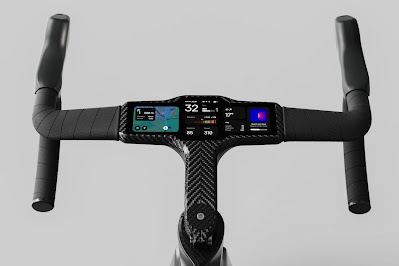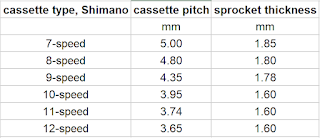Well, it's been a while but somehow I couldn't find time earlier to write a few words about my latest bike trip. Since back in April I finally managed to put a "new" road bike together, I wanted to try it out on a longer route.
First, the bike isn't really new. In fact, it's exactly the same old Lemond Poprad you have seen here back in 2012. Basically, since I built a new gravel bike in 2018, my old Poprad was disassembled and sold off for parts (partially, at least). The frame was nice though and I was looking for way to repurpose it, so I got a new fork, rebuilt the wheels, and pull out as many old parts from the spare parts bin as I could find. The result is a "new" road bike, that's actually pretty fun to ride.
Anyway, the idea for this route was to partially revisit old places (on a road bike this time) as well as to explore the unknown-to-me side of Lake Champlain in NY State. Since there aren't many gravel roads right near the lake's shore, road bike seemed to be perfectly appropriate. Additionally, I figured that I could travel really light and skip all camping equipment, booking a couple of budget hotels in the area. Call it credit card touring if you wish.
Day 1 - Williston, VT to Ticonderoga, NY (104km or 65mi)
Having nearly nothing to pack up for the trip, I left my house on Thursday (June 27th) in the morning and drove north towards Burlington, VT. As usual, left my car at Park & Ride and I was in the saddle at about 11:20am. The day was cloudy, with heavy overcast skies, but despite that it was warm (21C or 70F). It felt actually like a nearly perfect weather for bike riding (dry, cloudy, calm), but less so for taking pictures (grey skies are kind of boring).
Shortly after taking off I discovered a problem. The previous night I decided to charge the battery for my Ricoh GRIII but somehow instead of being charged, the battery got discharged completely (I had some issues with batteries in this camera before). At least I was able to confirm that the camera works and problem was only with the dead battery. So that meant that I can still recharge it in the hotel, but it left me without this camera for the rest of the day. Fortunately, I still had the old Lumix GX1 with me.
I got to Vergennes where originally I planned to stop for lunch, but I wasn't hungry at all so I snacked on a protein bar and decided to keep going. The route was taking me south, near the lake. There are some nice views from the hills in Addison County overlooking the lake below, with mountains across on the NY State side.
Eventually, I reached the ferry. Turns out that the ferry closes at 6pm, but I was there around 4pm so that was not an issue. However, after crossing the lake I just missed the cut off time for ticketing at Fort Ticonderoga. They stop selling tickets at 4:30pm. As I was getting quite hungry at this point, I decided to stop at the Ticonderoga Natural Foods store in the town center. Late lunch, but better late than never.
I did a short loop around the town but as there isn't much to see there, I got to the hotel early (~5:30pm). I could finally shower and charge the camera for the next day. Since the hotel was conveniently located near Walmart, I decided to resupply, and I must admit that food selection at Walmart is lousy at best. Unless I was just unlucky at that specific location.
Day 2 - Ticonderoga, NY to Plattsburgh, NY (143km or 89mi)
Friday, June 28th, I started at 7am. That's what happens when you don't have to waste time in the morning to pack up the tent and you go to bed early the night before - early starts.
The weather forecast completely missed the mark as it was predicting clouds, periods of rain and even thunderstorms in the afternoon. Instead, I got a perfect sunny morning weather with a very pleasant 16C (61F), later warming up to 24C (75F) in the late afternoon, but with some more clouds. Awesome cycling conditions, especially considering a light cool breeze from the lake.
Fairly quickly I reached the historic Fort at Crown Point, or its ruins, actually. Nice picnic spot with some pretty lake views.
I kept going with a brief stop at Port Henry, then reaching Westport, stopping for a quick lunch. From there my next stop was at Essex. That's where the route becomes very scenic with some magnificent views of the distant mountains in Vermont across the lake.
Not that I'm in favor of closing the already-scarce passenger train lines, but if the Amtrak Adirondack line ever gets axed, its tracks should be converted into a scenic bike touring route. The tracks are in places right next to the lake shore so I imagine that on the day like that one with great visibility, views from the train must be absolutely awesome.
Essex was cute, but next I had to climb across some hills to reach Ausable Chasm - an old hydroelectric plant on Ausable River and also an interesting tourist attraction of the river gorge.
From there, it was only a short run to Plattsburgh and since it was still early, I went to a local bar at the marina for a fish dinner with a pint. I got to my hotel around 5pm, resupplied at Hannaford (much better than Walmart) and called it a day.
Day 3 - Plattsburgh, NY to Williston, VT (65km or 40mi)
Saturday was supposed to be tricky as forecast was predicting severe weather changes. Periods of rain were essentially certain, but the worst part of it was supposed to be the wind, blowing from the south. As the most of my route was in the southern direction, taking me over the islands on the lake, I started to seriously question my choices. On top of that, some thunderstorms were forecasted in the afternoon. All that just didn't look too exciting.
I left the hotel around 7am again, considering two options: #1 - staying on the original route, which meant going further north towards the Canadian border, then crossing the lake over the bridge to Alburgh, and then going south back towards Burlington. Or, #2, taking a new alternative route, by ferry to Grand Isle and going straight back to Williston through Essex Junction.
As you can tell from the map, option #2 won, mainly because the wind was absolutely wild so I was quickly very glad that I don't have to ride in it for the most part of the day. Also, I figured that the since the main purpose of this trip was to see the NY side of the lake, I have already done it on the day before, repeating the route over the lake islands made little sense, as I have been there a few times already. I simply didn't feel like adding miles just for the sake of it.
The ferry ride was "fun", feeling like being in the sea during a storm. The ferry was swaying with large waves crashing into its sides and flooding the deck. Temperature on the lake dropped quite a bit, but as soon as we arrived in Vermont I was welcomed by light rain and warmer weather.
On the way south the rain stopped eventually, but strong wind was slowing me down. I finally reached the southern tip of the island and I discovered that the bike ferry connecting the causeway was closed on that day. I sort of expected this and while I have no idea what the reason was, I figured that they probably closed it as they thought that no one will be crazy enough to ride across the causeway in the middle of rain with strong winds. I had to find an alternate route.
That made the rest of the trip less exciting as I was forced to take more main roads, unfortunately sharing the space with cars. But I also figured out that since I had to ride towards Colchester, it made no sense to go back to Burlington, and I made my way directly towards Williston instead.
I briefly stopped at Essex Junction for something to eat and a hot tea, and I was back at the car at 11am, just before it started raining again.
Overall, it all worked out quite well, maybe except the last day, but views I have seen and new places I have visited the day before were rewarding enough to make the whole trip worthwhile.































